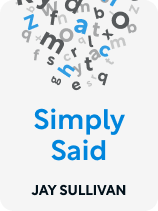

This article is an excerpt from the Shortform book guide to "Simply Said" by Jay Sullivan. Shortform has the world's best summaries and analyses of books you should be reading.
Like this article? Sign up for a free trial here .
What kind of voice should you use during public speaking? How loud should you speak? What about speed?
Managing your voice in public speaking is one of the hardest things about it, especially if you have little experience speaking for a large audience. Many beginner speakers practice saying their script but pay little attention to their voice, which is where things tend to go awry.
Here are some tips for managing your voice in public speaking.
Mind Your Voice
In public speaking, voice is often an afterthought, but it shouldn’t be. Communication expert Jay Sullivan advises paying attention to the speed, volume, and tone of your voice when speaking for a large audience:
Speed: You’ll more likely need to slow your pace rather than speed it up—most people talk fast out of nervousness. (Sullivan does add that talking fast on purpose can imply a sense of urgency.) Also, incorporate pauses to give your audience time to process what you just said. (Shortform note: What’s so bad about talking fast? Not only does it make you appear less confident and unorganized, it also makes your audience work harder to understand you—which goes against Sullivan’s advice to focus on their needs. Work on your pace by recording yourself as you practice your presentation. From there, you can gauge exactly how fast you’re talking and make adjustments. A good rate to aim for is 150-160 words per minute.)
Volume: When speaking without a microphone, Sullivan recommends projecting your voice enough to reach the person farthest away from you. Deliberately varying your volume can keep people more engaged. Saying something loudly can emphasize a point; counterintuitively, lowering your voice on occasion can encourage them to lean in and listen more intently. (Shortform note: Remember that projecting your voice is different from yelling—yelling uses your vocal cords, while projecting uses your diaphragm, or the muscle at the base of your chest. To practice using your diaphragm, try this exercise: Take a big breath in, feeling your abdomen expand, then force all the air out with a “ha.” You should feel your diaphragm contract.)
Tone: Inject energy and positivity into your tone by delivering your message with a smile. Avoid sounding lifeless, which tends to happen when you read your notes in a monotone voice. However, Sullivan cautions that while varying your tone, you should avoid “upspeak”—using a rising inflection at the end of a declarative sentence, making it sound like a question. This type of tone makes you sound tentative. (Shortform note: Sullivan says you should avoid upspeak, which is often derided as an undesirable practice, but others argue that it has a necessary function: Contrary to the belief that it makes you sound tentative, it may actually encourage other people to listen actively and discourage them from interrupting.)

———End of Preview———
Like what you just read? Read the rest of the world's best book summary and analysis of Jay Sullivan's "Simply Said" at Shortform .
Here's what you'll find in our full Simply Said summary :
- A blueprint for effective business communication
- How to create and deliver memorable presentations
- How to write documents and emails that people will actually read






